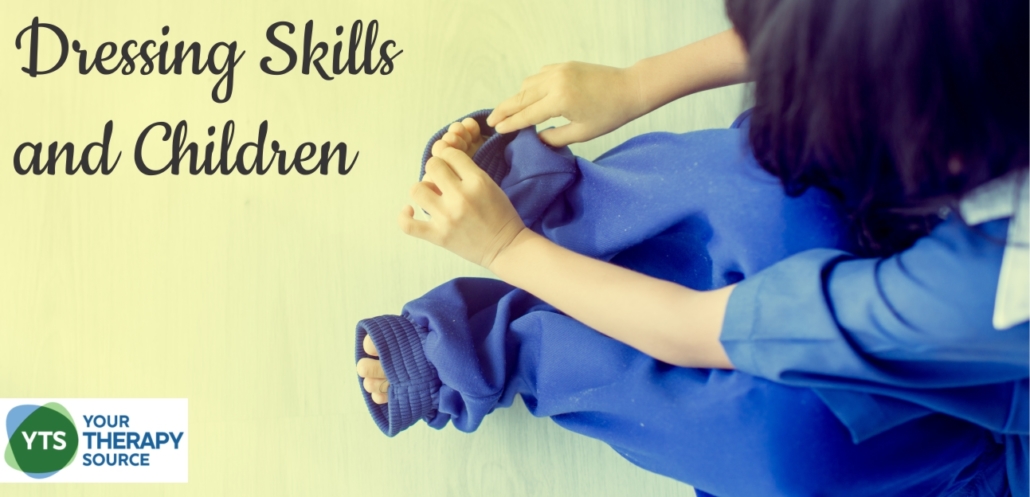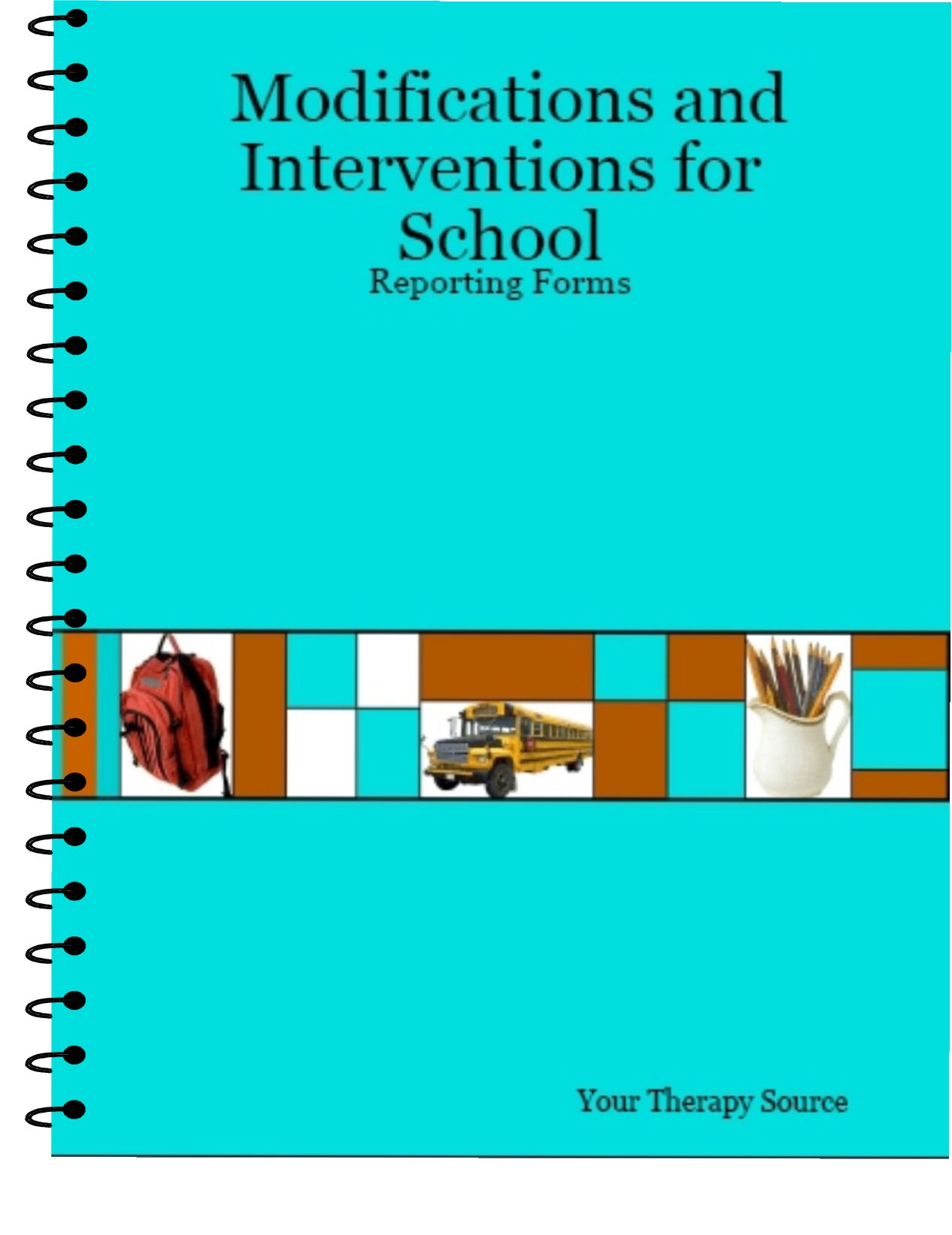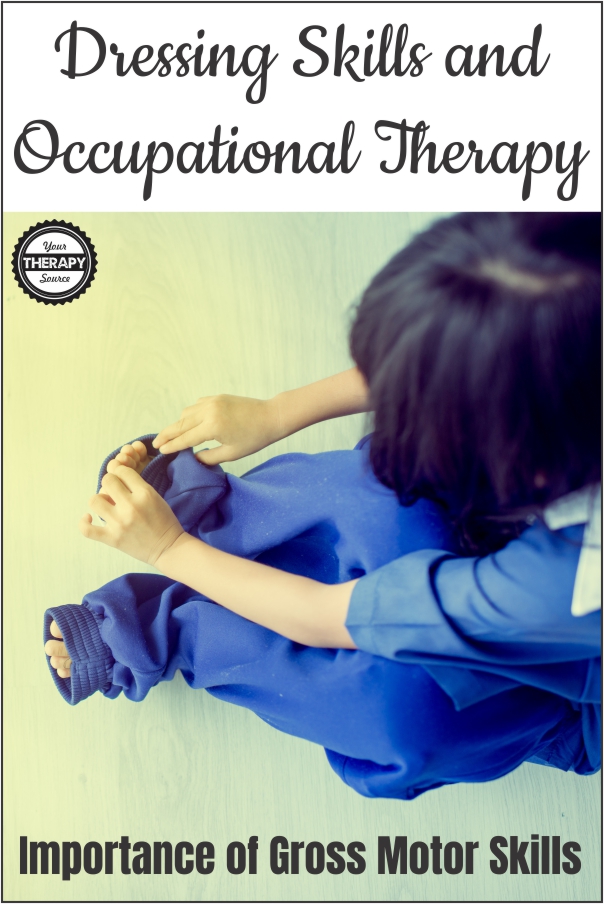Gross Motor Skills and Independent Dressing

The ability to complete the functional task of dressing requires various gross motor skills, balance and coordination skills. Many times dressing skills are worked on during occupational therapy or physical therapy sessions to help children to become more independent. Teaching dressing skills to children with autism is often a goal of parents and therapists during the early years.
It is important to remember that there are many steps to dressing. When you perform a task analysis on dressing, you quickly realize all the skills involved from fine motor skills, coordination, balance, cognitive awareness, and gross motor skills.
GROSS MOTOR SKILLS AND DRESSING SKILLS BY AGE
Independent dressing skills require higher level gross motor skills to complete. The developmental milestones of dressing skills occur along a continuum. A child moves along the developmental stages gradually learning the gross motor skills needed to undress and dress.
At about 12 months of age, a child will extend his foot or arm to go into a pant leg, shoe or sleeve. The child needs to range of motion in the muscles and joints to complete this skill.
At around 18 months, a child has the balance and postural control to sit unsupported and use his/her hands for other tasks. The child can reach and pull off socks and possibly shoes if unlaced. The child can again maintain the postural control to reach overhead to remove or place a hat on his/her head.
At around 24 months, a child can coordinate both sides of the body to unzip and remove shoes. These skills require the ability to bring the hands to midline, maintain postural control and balance in sitting.
From 24 months to 36 months, a child continues to progress in dressing skills. A child will be able to put shoes on, pull pants down and up with assistance, unbutton, undress and dress with assistance. To put shoes on, a child must cross midline, coordinate both sides of the body to work together, rotate the trunk all while maintaining postural control and balance. At this age children will still require assistance with some of the gross motor tasks of undressing and dressing such as maintaining balance, eye hand coordination to reach and motor planning skills to complete all the steps.
From 3 to 4 years old, a child will be able to pull down and pull up elastic type pants, put on front opened shirts and t-shirts, put socks on, button, removes pull over or front opening shirts and unbuttons. When pulling down and up pants, a child must be able to squat, maintain balance and coordinate both sides of the body to hold the waistband. Putting on shirts or removing shirts, require crossing midline, reaching with the shoulder, postural control and balance skills. Kinesthetic and body awareness skills are needed to complete the skill because the eyes may be occluded when the clothing is covering the head. Putting on socks requires the ability to cross midline, reach and the strength to pull the sock over the foot.
Around 4 to 6 years old, children will be able to dress and undress independently, including understanding directionality of the clothing (front and back) and shoes (left and right).
Therefore, for complete independence with dressing skills, a task analysis of dressing indicates the child must be able to:
- reach in all directions
- rotate the trunk and cross midline
- bend at the waist
- maintain sufficient postural control to allow the extremities to complete the skill
- squat and return to standing
- maintain balance in sitting and standing while reaching
- stand on one foot while the other half of the body is moving
- be aware of where the body parts are in space (ie body awareness)
- motor plan multiple steps
- coordinate both sides of the body and the eyes/hands to work together.
DEFICITS IN GROSS MOTOR SKILLS AND THE EFFECTS ON DRESSING SKILLS
If a child has deficits in range of motion, it will greatly affect the child’s abilities to dress independently. For example, children can not reach their arm through a sleeve if their elbow can not straighten completely or the shoulder can not reach up high enough to put the hand into the sleeve. If the child can not bend the hip and knee, he/she will have a difficult time removing or putting on socks and shoes.
Trunk rotation and flexion/extension (bending/straightening at the waist) are necessary to reach to undress and dress. The trunk muscles need to be able to sustain a contraction and stabilize the body while the arms reach to help with the clothing. If a child is unable to rotate the trunk and cross midline, he/she may require assistance or adaptive equipment since many dressing skills require to use of two hands.
If a child is unable to squat and return to standing, pulling pants up and down can be difficult. A lack of muscle control in the lower extremities may result in falling down while dressing.
Significant deficits in sitting and standing balance may result in the child needed assistance or modifications to the environment such as sitting in a corner or on a bench while dressing.
When motor planning deficits are present, a child may need assistance to break down the steps of dressing or with organizing the clothes (clearly marking front/back or left/right). Visual step by step dressing directions may be helpful.

Dressing Skills
Delays in eye hand or bilateral coordination skills will also make independent dressing difficult. A child may need verbal or physical cues, modeling and extra practice time to complete the skills.
For children with gross motor skill and/or motor planning deficits, try teaching dressing using backward chaining. Backward chaining means that an adult provides assistance throughout several steps until the child can complete the last steps independently. For example – you help the child hold shirt, put arm through, put overhead and put other arm through. The child then completes the last step independently of pulling the shirt down. Continue this process by advancing to the child completing the last two steps…the last three steps…etc until the child is independently putting on the shirt.
GROSS MOTOR ACTIVITIES TO WORK ON DRESSING SKILLS
Gross motor activities that focus on postural control, trunk rotation, bilateral coordination, eye hand coordination, motor planning and balance skills are beneficial when it comes to teaching dressing skills in occupational therapy. Here are 5 suggested activities:
- Play games where the child has to reach outside of his/her base of support without falling over. Practice in sitting or standing depending upon the child’s skill level. For example, try batting a balloon in the air with your hands but do not move your feet. The child will be practicing trunk rotation, eye hand coordination skills and balance skills.
- Squatting activities while the child is holding an object. Put a hula hoop on the floor. Can the child squat down, pick up the hula hoop and reach it overhead? Put it back on the floor in front of the child and repeat. Can you get across the whole room only stepping in the hula hoop? Roll a large ball to the child. The child can squat down, pick it up with two hands and push it back.
- Body awareness game such as Simon Says adding in directions such as “Simon says touch your both hands to your left foot” or “Simon says squat down and touch the floor”. If Simon Says is difficult for the child play a game of Match Me. Move your body a certain way ie reach your right arm behind your back and the child tries to match your actions exactly.

Move Like Me – Motor Planning, Coordination and Body Awareness
- Play catch or kick a ball to each other. Simple games of catching, throwing and kicking include many of the underlying skills necessary for learning how to get dressed. When catching a ball a child brings his/her hands to midline (skill needed for unzipping, buttoning, etc). When throwing a ball, a child rotates the trunk and brings the arm across midline during the follow through phase (skill needed to reach for socks and shoes). When kicking a ball, a child has to momentarily stand on one foot while the other side of the body is moving (skill needed for getting pants on and off in standing).

Teaching Catching, Throwing and Kicking Skills
- Set up obstacles courses that require the child to motor plan different activities. Include activities related to dressing ie. put on bigger shoes and walk several feet forward without losing your balance, pick up a small hula hoop or ring with your left hand and slide it up your right arm (mimics putting on a shirt), hide an object in a zippered bag for the child to rescue at the end of the obstacle course. Try relay races including getting dressed in bigger clothes. Set up two teams, run to the pile of clothes, put on large shorts, front open shirt and big shoes. Take them all off and run back to the starting line. Not enough kids to make teams? Just time one child and see if they can beat his/her record and get it done as fast as possible.
MODIFICATIONS TO HELP WITH GROSS MOTOR SKILLS AND GETTING DRESSED
If a child has delays in gross motor skills that are affecting independent dressing, you may be working on dressing skills in occupational therapy and need to modify the environment.
5 Tips for Teaching Dressing Skills in Occupational Therapy
- Try completing the dressing skills in different positions. Laying on the floor on the back or side may be easier for some children. If the child is unable to maintain his/her balance, try sitting in a corner or on a bench. If minimal support is needed in standing provide a grab bar or a chair for the child to hold onto while completing the dressing routine.
- If the child has one side of the body weaker or tighter than the other, dress that side first. If undressing, remove the weaker/ tighter side last.
- If the child has decreased balance and/or postural control choose easy on and easy off clothing whenever possible such as elastic shorts, elastic pants or shirts without buttons.
- For motor planning and/or body awareness deficits, lay the clothes out in the proper order and direction for the child. Make sure all the clothes are turned right side out.
- Reduce visual and auditory distractions. Children need to visually focus on their body parts and clothing to dress independently. Provide verbal reminders if needed. Try to use the same wording on each step by step direction for consistency. As the child becomes more independent, reduce the verbal cues until they can be discontinued completely.

Modifications and Interventions for School Reporting Forms
Being able to dress independently, requires many steps and motor skills. If you work on dressing skiils in physical or occupational therapy and you need to track progress check out Dressing Rubrics to collect data on dressing skills.

Dressing Skills Rubrics
References:
Furano et al and Parks, S (2014). HELP® Checklist 0-3 Birth to Three Years. VORT Corporation.
Teaford, P et al (2010). HELP® Checklist 3-6 Checklist. VORT Corporation.




Comments are closed.